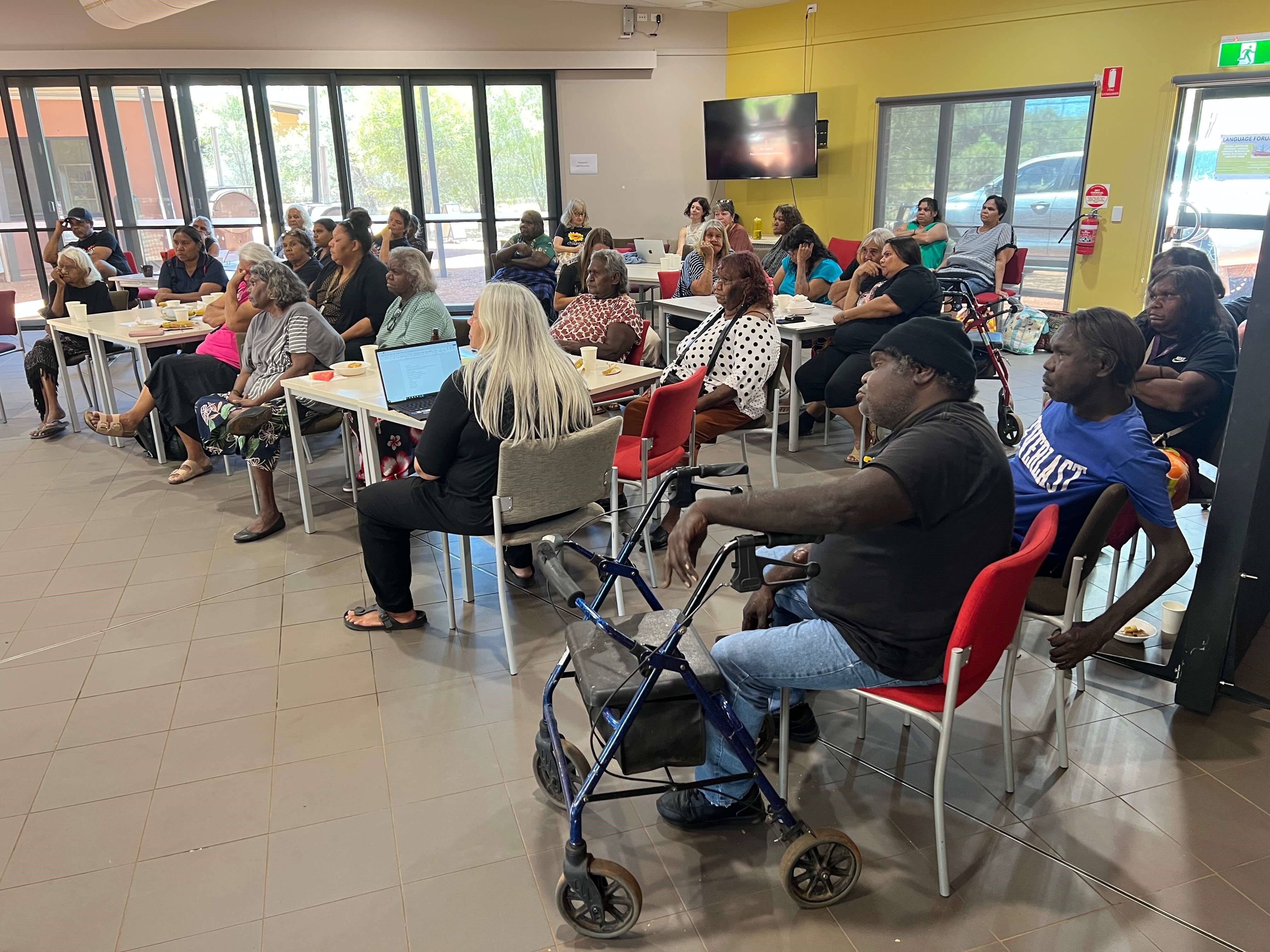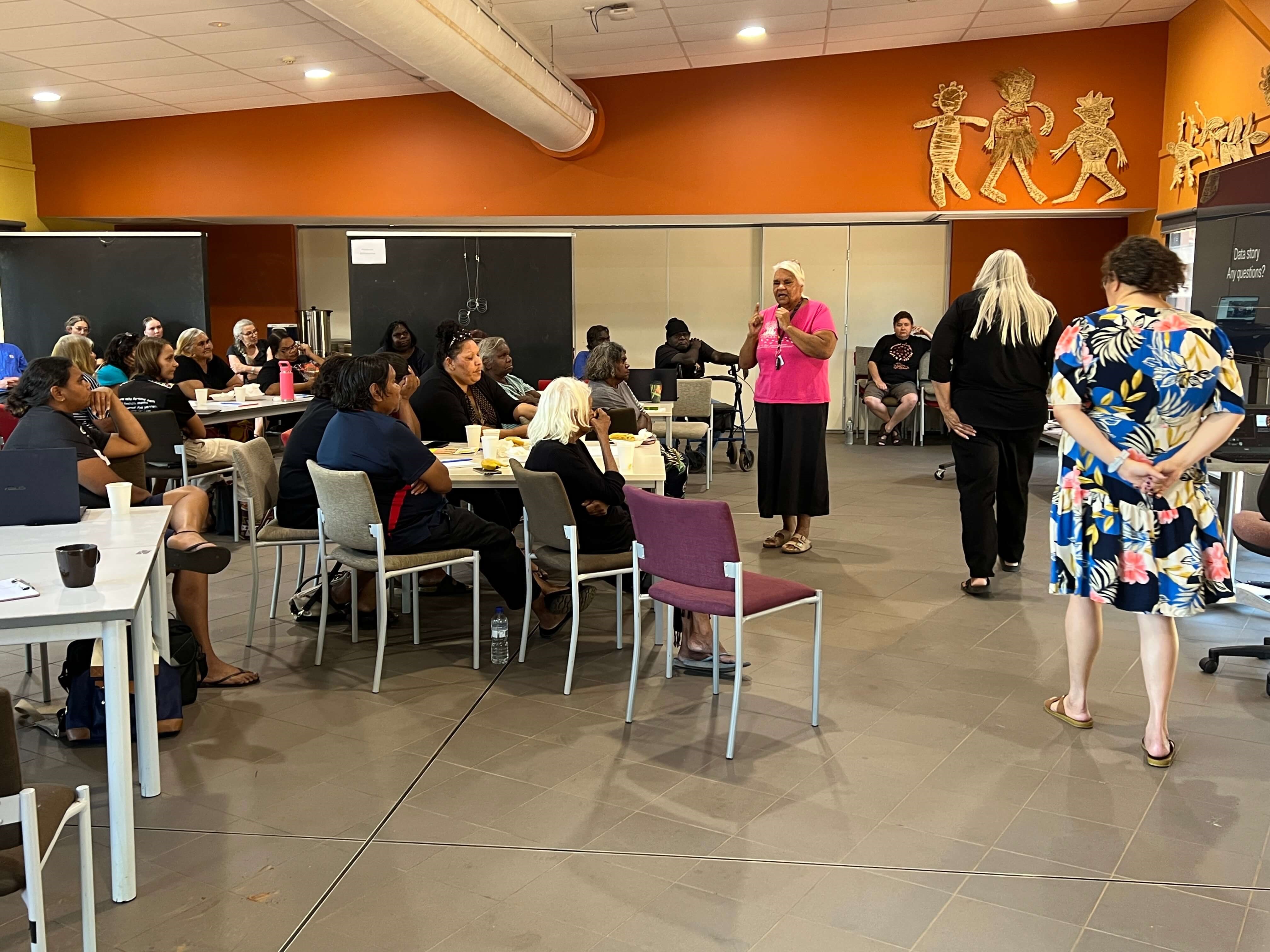

Language is more than just speech; it's the very essence of Aboriginal culture, linking individuals to their heritage, identity, and well-being. Recognised by Closing the Gap Target 16, language preservation is crucial for cultural continuity and emotional health. In Central Australia, where some languages are at risk of fading into silence, concerted efforts are being made to ensure these voices continue to resonate through generations.
Since Nov 2022, the Centre for Australian Languages and Linguistics (CALL) has played a leadership role in this project funded by Indigenous Languages and the Arts (ILA), to increase Language Centre services dedicated to Central Australian languages. This initiative has seen CALL joining forces with Desert Knowledge Australia (DKA), Children's Ground, the Institute for Aboriginal Development (IAD), the Alice Springs Language Centre, and numerous language and knowledge holders from the region.
The consultation process was comprehensive, visiting around 12 communities and outstations, engaging with over 200 individuals to capture their visions for a Language Centre. This journey culminated in a two-day language forum where the gathered data was presented, and five key recommendations were endorsed. The event wasn't just about talking; it was also a celebration of language, featuring a film night supported by CAAMA that showcased local language films, including animations and stories in various Indigenous languages, fostering a sense of pride and connection.
The forum's second day included a "Let's Talk Language" morning tea, where language champions shared their experiences through a series of podcasts, underscoring the importance of language in Aboriginal communities. You can dive into these inspiring conversations at this link.
This collaborative effort started in 2022, with CALL staff Ange Harrison and Camille Dobson worked with the stakeholders to formailse a Working Group, blending the expertise of various organisations with the profound knowledge of language custodians to navigate this cultural journey.
Securing funding was another critical step, with Camille and the Working Group drafting a grant application that brought the project to life. In partnership with DKA, Camille managed the project.
Batchelor Institute's approach has always been about the Both-Ways Philosophy, integrating Indigenous wisdom with Western methodologies to respect and nurture cultural heritage. This initiative has been no different, ensuring that every step taken was with the community's vision in mind, making the consultation process as inclusive as possible.
This isn't just about preserving words; it's about empowering communities, aligning with Batchelor Institute's broader educational and cultural goals. The commitment from all involved parties has not only brought ideas to the table but has also ignited a collective passion to see this through.
The backdrop to this story is the UN's Decade of Indigenous Languages (2022-2032), a global call to action for the preservation, revitalization, and promotion of Indigenous languages. Looking forward, the clear message from communities and stakeholders is for continued collaboration to support language aspirations. CALL remains enthusiastic about its role in this ongoing journey, aiming to deliver the best outcomes for language preservation.
As Veronica Perrurle Dobson, an Eastern Arrernte Elder, profoundly states, "People without their language always talk about feeling disconnected. We want a language centre to be a place where people can come and learn their language, so they can teach it to their children and grandchildren. Language is our identity, we all have a right to be able to learn it."
This initiative is more than a project; it's a movement towards cultural reclamation, ensuring that the languages of Central Australia thrive, echoing through time and teaching future generations the songs of their ancestors.

